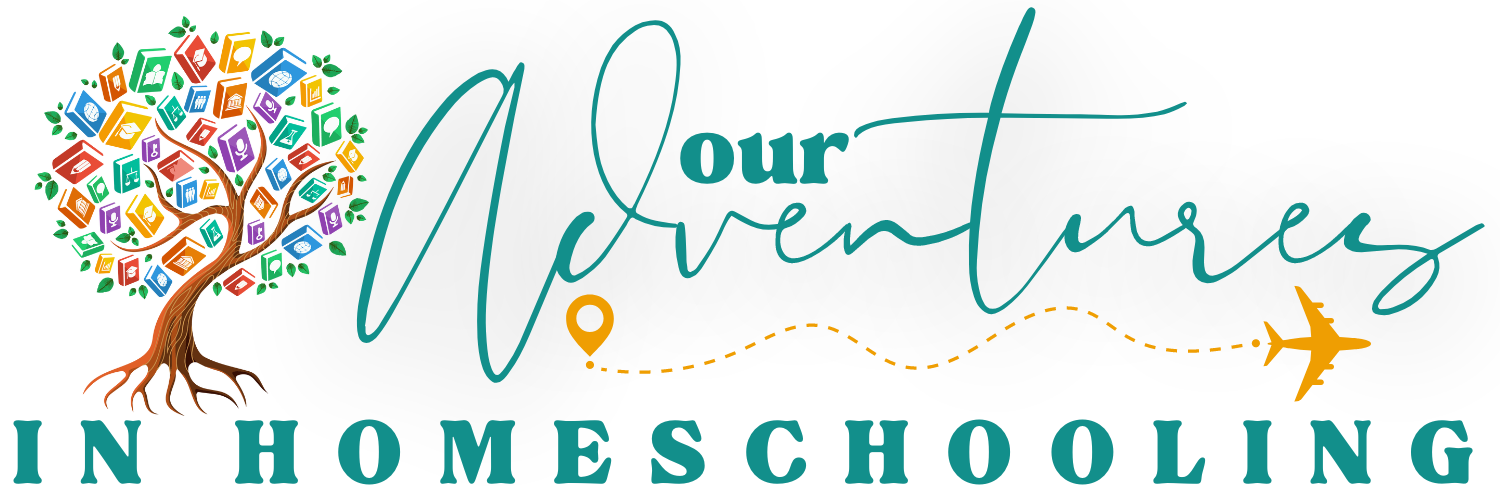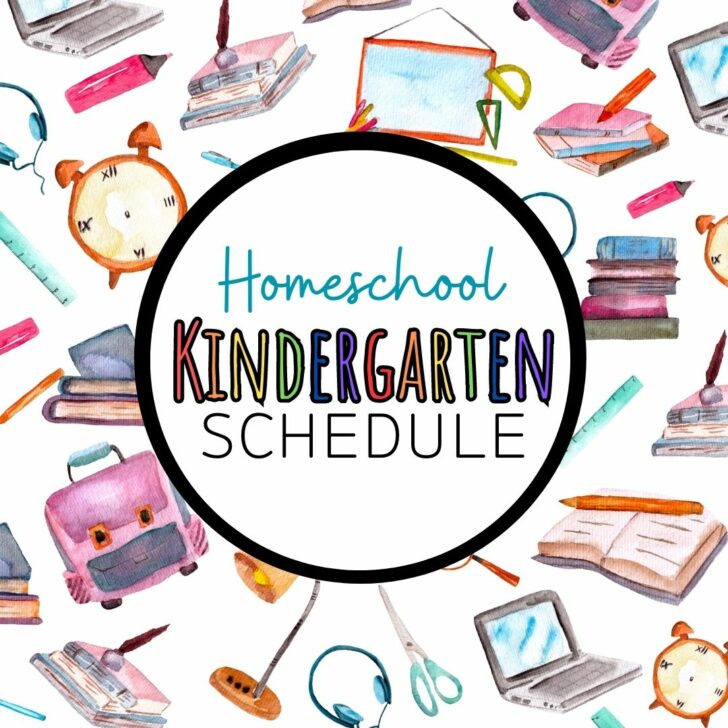Your kindergartener has a fantastic opportunity to have their education individualized by being homeschooled. Establishing a well-structured homeschooling kindergarten schedule is essential for maximizing this experience.
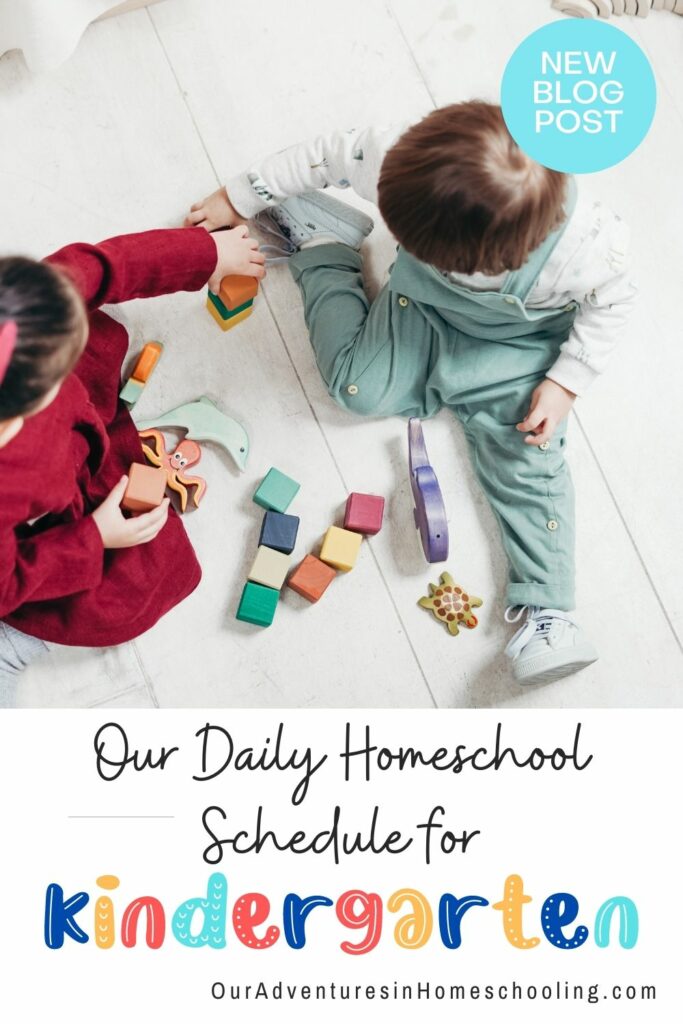



A thoughtful and organized schedule ensures that your child receives a well-rounded education while allowing for flexibility and fun. In this blog post, I’ll guide you through creating an effective homeschool kindergarten schedule that promotes learning, engagement, and growth.
Keep the Focus on FUN!
Now, keep in mind that a “well-structured” schedule DOES NOT equate to a day filled with book work. In kindergarten, you should actually limit the amount of “book work.” to just 30-45 minutes a day.
Children learn best through play! When children engage in play, they are not merely having fun; they are actively exploring, experimenting, and acquiring vital skills and knowledge. Make sure you read the Benefits of Play Based Learning!




So, as you read, keep in mind that play should be the primary focus, and what you believe your kindergartener SHOULD be learning should be the secondary focus.
Every child will learn to read and write at a different pace, just as every baby learns to walk and talk at a different time.
Incorporate Core Subjects:
When planning your homeschool kindergarten schedule, prioritize core subjects such as reading, writing, and math. During kindergarten, there’s not much more that children really NEED beyond these 3 subjects.
Allocate specific time slots for each subject to maintain a balanced curriculum, I recommend spending no more than 15-20 minutes on each. Remember to adapt the duration and complexity of activities to match your child’s developmental stage and attention span.
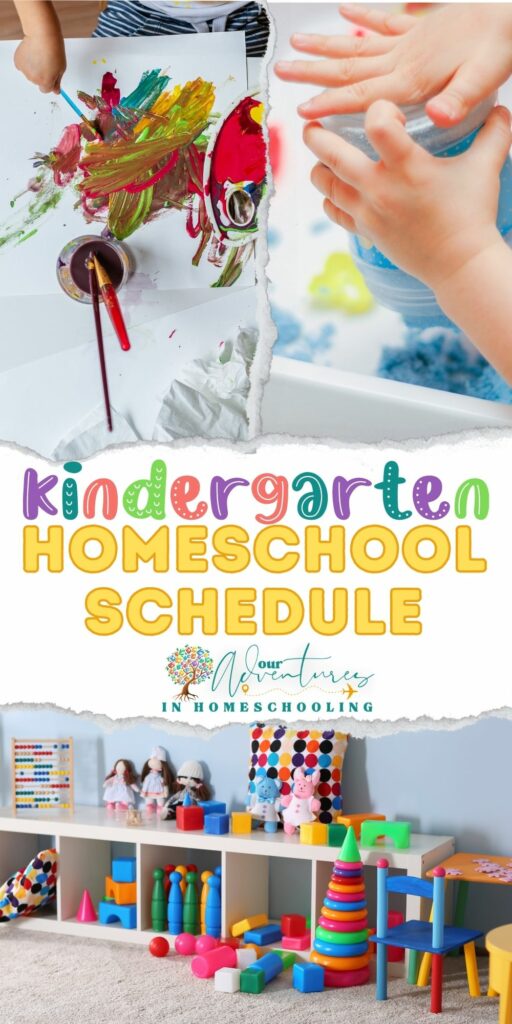



When my daughter was in kindergarten we used ABCMouse and Reading Eggs for reading and math. Then for writing, I would just have her draw.
Don’t worry about how your child’s handwriting looks during these first few years, their hand bones and muscles are still forming so they won’t have the motor control of older children. Focus on building these muscles by doing fine motor activities like painting, picking up small objects, using scissors, and just creating fun projects.
Start with a Daily Routine:
Establishing a consistent daily routine helps your kindergartener develop a sense of structure and aids in their overall learning experience.
Begin with setting regular wake-up and bedtime hours to ensure sufficient rest. Structured routines help children feel secure and ready to engage in learning activities.
YOU decide what you want your daily routine to look like, so plan it out however YOU want. This is the beauty of homeschooling…YOU are in control.
I’ve found that breaking the day down into 3 sections at a time works best. We have “morning”, “afternoon”, and “evening” times blocked out.
Each section is about 4-5 hours long and can vary day to day. I don’t set a specific time schedule, because this is more about getting into a routine rather than being on a strict schedule.
Now, if we do have an outside class scheduled at a particular time, then obviously, we schedule that into our routine…but when you’re setting your homeschool kindergarten schedule, the focus should primarily be about setting good habits throughout the day.
Our Homeschool Morning Routine
“Morning” is whatever time my kids naturally wake-up time until we have lunch. During this time, I have my kids get ready for the day. They get dressed, brush their teeth, make their beds, and come downstairs for breakfast.
During breakfast we watch an educational show like CNN10, Number Blocks, The Magic School Bus, Wild Kratz, or a short documentary. BrainPop is one of my favorite learning activities to do during this morning wake up time. Then we talk a little bit about what we just watched.
After breakfast, we start our school day. This is when I like to knock out any “book work” like math and writing. I find it’s best to get the harder stuff out of the way earlier in the day.
Again, in kindergarten, I prefer game play for learning reading, writing, and math. Whether you choose an online program like ABCMouse or Reading Eggs; or choose a screen-free option like Learning Resources’ MathLink, their Sight Word Swat game; or a traditional workbook like Evan Moor’s Everyday Literacy Math or their Skill Sharpeners: Spell and Write; make sure you keep the learning lighthearted and fun.
I limit this book work to 20 minutes….the younger the kids, the shorter the attention span! After about 15-20 minutes your child is going to be begging for a break. This is a great time to mix some PE in by going to the playground, taking a walk, or finding something active to do.
Once we’re finished with our activity, we head back in for another 15-20 minutes of “book work”…typically writing or reading practice. Then it’s time for lunch.
Our Homeschool Afternoon Routine
Our afternoon schedule looks different every day because this is when I schedule a LOT of our extra curricular activities. I like to use a loop schedule for the afternoon, that way we don’t get bored and things are always fresh.
After lunch, if we’re not running to a weekly activity like gymnastics, art, music, or golf, then we do a unit study as a family. I like to do history and science as unit studies because they’re easily adapted for all ages…and honestly, they’re so fun to do together!
Our afternoon time block is also time for getting chores done, taking some quiet time, and getting dinner started.
Our Homeschool Evening Routine
As you venture further along in your homeschool journey, you’ll notice learning becomes a lifestyle and is not confined to traditional school hours. Some of our most captivating learning happens in the evening when we’re all gathered together as a family!
After dinner, we like to do an activity as a family. Typically, we’ll watch an age appropriate documentary, play a board game, work on a puzzle, or play video games. Yes, video games can be educational!
Then it’s time to get ready for bed. Once the kids are snuggled in bed, then we focus on reading. Some nights I’ll read a chapter book and other nights the kids will read. It truly depends on how tired everyone is and the evening vibe.
Especially during kindergarten, I like to leave reading for the end of the day because it reminds me that there’s no rush. The kids WILL learn to read WHEN they’re ready. Leaving reading to the end of the day reminds us to approach reading as a fun and leisurely activity.
Remember, setting a homeschool kindergarten schedule is all about building routines you want to continue throughout your homeschool journey.
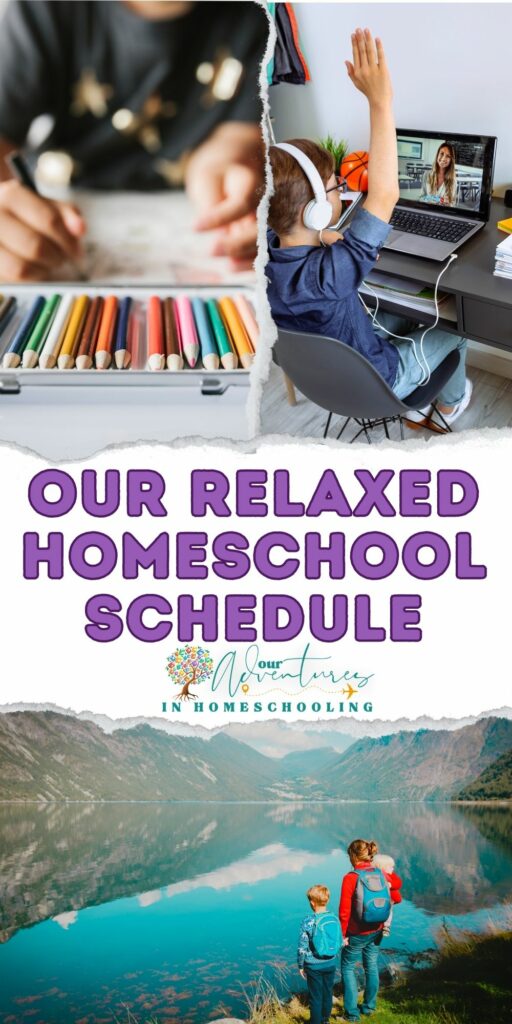



Utilize Interactive Learning Activities:
Kindergarteners thrive on interactive learning experiences. Incorporate hands-on activities, games, and educational resources that engage multiple senses.
This not only makes learning enjoyable but also enhances retention and comprehension. Look for online resources, interactive apps, and educational toys that align with your curriculum goals.
Encourage Physical Activity:
Regular physical activity is essential for young learners. Schedule dedicated breaks for movement and exercise throughout the day. Read about the benefits of physical play for early learning.
This can include short outdoor play sessions, dance breaks, or yoga exercises. Physical activity not only promotes overall well-being but also helps improve focus and concentration.
Include Art, Music, and Creativity:
Nurture your kindergartener’s creativity by incorporating art, music, and other creative activities into their schedule. Engaging in artistic pursuits fosters self-expression, critical thinking, and fine motor skills.
Set aside time for drawing, painting, singing, or listening to music. Explore various mediums and encourage your child to experiment with their imagination.
Integrate Field Trips and Educational Outings:
Expand your child’s horizons by integrating field trips and educational outings into your homeschool schedule. These experiences provide valuable real-world connections to what they are learning.
Plan visits to local museums, libraries, nature reserves, or farms. Field trips offer unique learning opportunities and help make homeschooling more dynamic and memorable.
Did you know Disney World is an educational field trip filled with learning opportunities? We even turned our family vacation to The Outer Banks, NC into a homeschool field trip packed full of learning!
Promote Independent Learning:
Encourage independent learning by allotting dedicated periods where your kindergartener can explore topics of interest on their own.
Provide a variety of age-appropriate books, puzzles, and educational games that they can engage with independently. This fosters curiosity, self-motivation, and a love for learning.
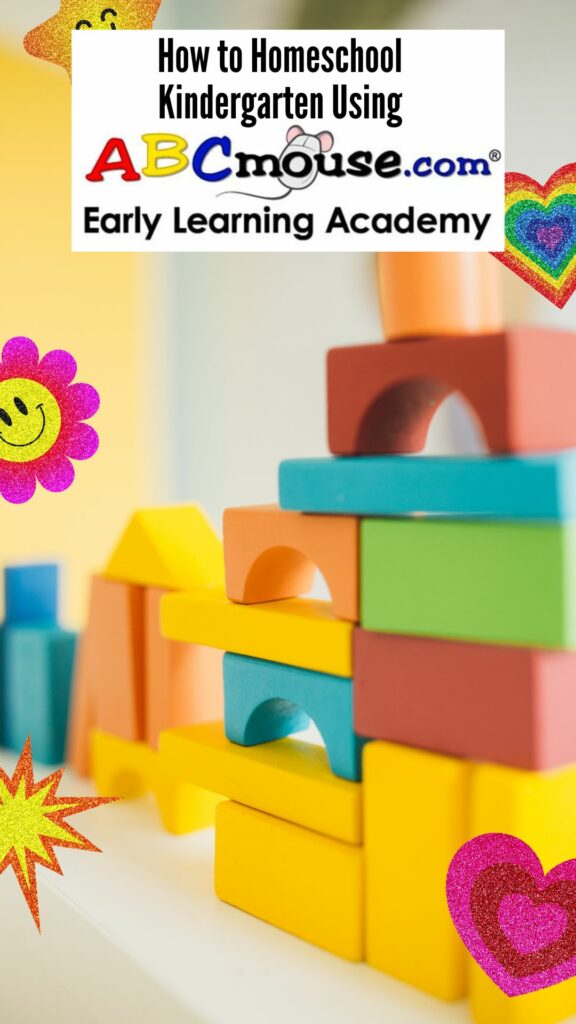



Allow for Flexibility:
While structure is important, flexibility is equally crucial. Recognize that each child’s learning pace and preferences vary.
Adjust your schedule accordingly and be open to spontaneous learning opportunities. Flexibility allows you to adapt to your child’s needs and interests while maintaining a balanced educational experience.
Homeschool Kindergarten Schedule to Thrive
Designing a homeschool kindergarten schedule requires careful consideration and planning. A well-structured schedule provides your kindergartener with a solid foundation for academic and personal growth.
Remember to balance core subjects, interactive activities, physical exercise, and creative pursuits to create a well-rounded educational experience.
By nurturing their curiosity and tailoring the routine to their individual needs, you’ll set your child up for success in their homeschooling journey.
